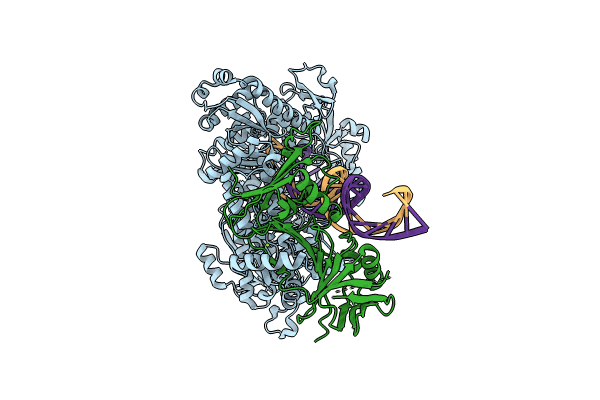
Deposition Date
2023-03-24
Release Date
2024-04-03
Last Version Date
2024-07-17
Entry Detail
PDB ID:
8OJ6
Keywords:
Title:
HSV-1 DNA polymerase-processivity factor complex in pre-translocation state
Biological Source:
Source Organism:
Human alphaherpesvirus 1 strain KOS (Taxon ID: 10306)
synthetic construct (Taxon ID: 32630)
synthetic construct (Taxon ID: 32630)
Host Organism:
Method Details:
Experimental Method:
Resolution:
2.41 Å
Aggregation State:
PARTICLE
Reconstruction Method:
SINGLE PARTICLE


